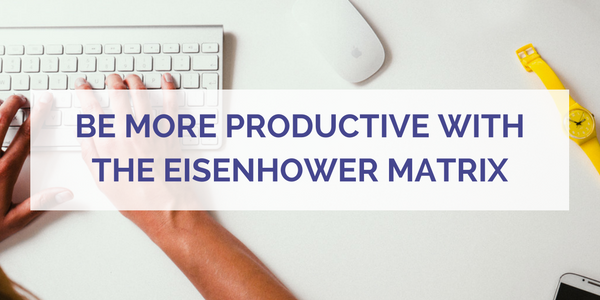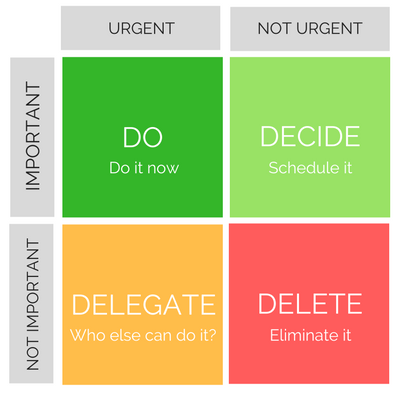
Dwight D Eisenhower was the 34th president of the United States and during his spell in office, made several landmark achievements including the launch of the internet and the exploration of space. A former General of the US army, Eisenhower was responsible for some of the biggest military campaigns during WWII including the invasions of North Africa, France, and Germany. He could arguably be considered one of the most productive leaders in the 21st Century. But how did he become so successful? He knew how to prioritise his workload.
In this article, we explain one of the biggest tools in his productivity armoury, the Eisenhower Matrix.
What is the Eisenhower Matrix?
Put simply, it’s an easy way of prioritising your tasks based on organising them into four main categories. These are
1. Urgent and important tasks (that you should do immediately).
2. Important, but not urgent tasks (that you should schedule for later).
3. Urgent, but not important tasks (that you should delegate to someone else).
4. Neither urgent nor important tasks (that you should delete from your list entirely).
What are ‘important’ tasks?
Important tasks are those that you feel will help you achieve your long-term goals. If your goal is to complete a project on time, ‘important’ tasks are those that help you towards this goal, such as completing a project plan.

What are ‘urgent’ tasks?
Urgent tasks are things that you THINK you need to act on immediately. But they might not always be important, such as answering emails or taking phone calls.
Why should you delete tasks?
Well, the answer to this question is easy. If you have defined your goals and the item on your list neither helps you achieve these goals or is not urgent, then why is it on the list at all? The quickest way to complete a task is to delete it all together. It is very easy to be busy, for the sake of being busy. Get into the habit of deleting tasks and you will soon find yourself completing tasks that are actually important and you will be much more productive. Work smarter, not harder.
Once you understand these simple concepts you can start applying the Eisenhower matrix to your daily, weekly or even monthly to do lists.
Written by Mike Pye